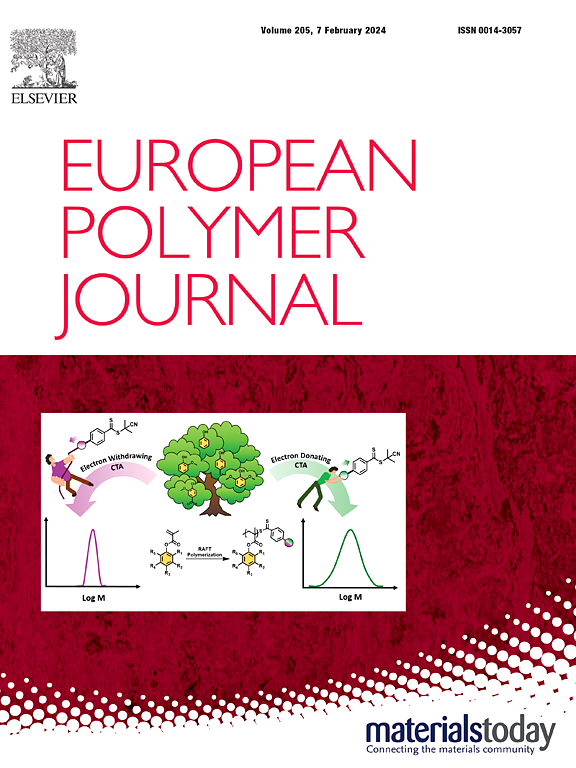Cationic photocurable epoxy compositions with metallic filler: Influence of monomers and photoinitiators on electrical conductivity
IF 5.8
2区 化学
Q1 POLYMER SCIENCE
引用次数: 0
Abstract
Cationic curable epoxy formulations with metallic fillers are suitable for electrically conductive photocurable systems, due to the shadow cure mechanism efficiently curing material hidden from irradiation between the filler grains. The goal of this study was to examine how the electrical resistivity of the material depends on monomer combinations and photoinitiators (PIs) used, with an emphasis on obtaining low resistivity materials from low viscosity mixtures. A dendritic, silver-coated copper filler was dispersed in mixtures of cycloaliphatic epoxy, oxetanes, and an epoxy reactive diluent with two different PIs. Rheology of the mixtures was studied to distinguish between the influence of the geometric configuration of the filler grains and that of electric contact resistance between them. Temperature scans were run to understand the influence of thermal expansion and glass transition on the resistivity. It was shown that in the intermediate range of the filler content value, between 30 % and 50 %, the resistivity strongly varies with the species and the combination of the monomers used, the PI type, and its concentration. Large part of this variability originates from the contact resistance between the filler grains. Hypothetic mechanisms of variability of the contact resistance were defined, based on chemical and thermal shrinkage in the photocuring, and its possible variability along the path of the curing front propagating between the filler grains. It explains how the effects may emerge but does not tell why different characteristics of the particular PIs used directly influence the effect. Additional experiments were proposed to gather insight into this ambiguity.

求助全文
约1分钟内获得全文
求助全文
来源期刊

European Polymer Journal
化学-高分子科学
CiteScore
9.90
自引率
10.00%
发文量
691
审稿时长
23 days
期刊介绍:
European Polymer Journal is dedicated to publishing work on fundamental and applied polymer chemistry and macromolecular materials. The journal covers all aspects of polymer synthesis, including polymerization mechanisms and chemical functional transformations, with a focus on novel polymers and the relationships between molecular structure and polymer properties. In addition, we welcome submissions on bio-based or renewable polymers, stimuli-responsive systems and polymer bio-hybrids. European Polymer Journal also publishes research on the biomedical application of polymers, including drug delivery and regenerative medicine. The main scope is covered but not limited to the following core research areas:
Polymer synthesis and functionalization
• Novel synthetic routes for polymerization, functional modification, controlled/living polymerization and precision polymers.
Stimuli-responsive polymers
• Including shape memory and self-healing polymers.
Supramolecular polymers and self-assembly
• Molecular recognition and higher order polymer structures.
Renewable and sustainable polymers
• Bio-based, biodegradable and anti-microbial polymers and polymeric bio-nanocomposites.
Polymers at interfaces and surfaces
• Chemistry and engineering of surfaces with biological relevance, including patterning, antifouling polymers and polymers for membrane applications.
Biomedical applications and nanomedicine
• Polymers for regenerative medicine, drug delivery molecular release and gene therapy
The scope of European Polymer Journal no longer includes Polymer Physics.
 求助内容:
求助内容: 应助结果提醒方式:
应助结果提醒方式:


